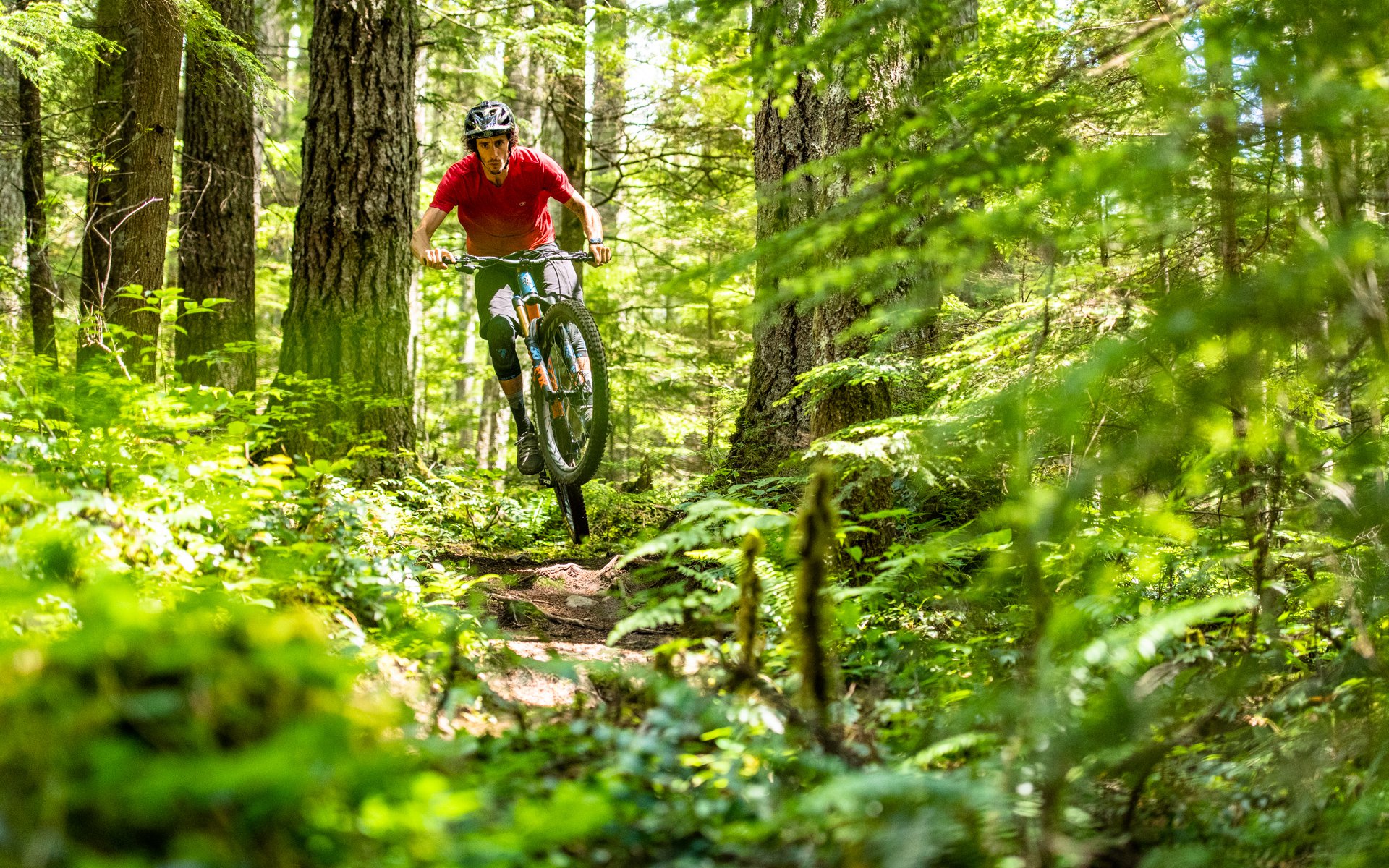
Long Term Review
2018 Ibis Ripmo Reviewed
The Ibis Ripmo has had riders from far and wide lusting after it. The long-travel 29er, built around the DW-Link suspension platform and modern geometry is a looker. It’s no wonder riders peer inconspicuously through their tinted shades when they see one roll by. As mentioned in the first look, the Ripmo is the melding of the Ibis Mojo and Ripley, which explains the name. It seeks to balance the aggressive, capable demeanour of the Mojo with the enthusiastic ride qualities of the Ripley.
Component Check
The model reviewed here is the X01 Ripmo which retails for 7,099 USD, but our example came with some upgrades. The addition of a Float X2 rear shock and Ibis carbon wheels boosts the price to 8,169 USD. I swapped in the Fox DPX2 for some rides but the carbon wheels remained for the duration.
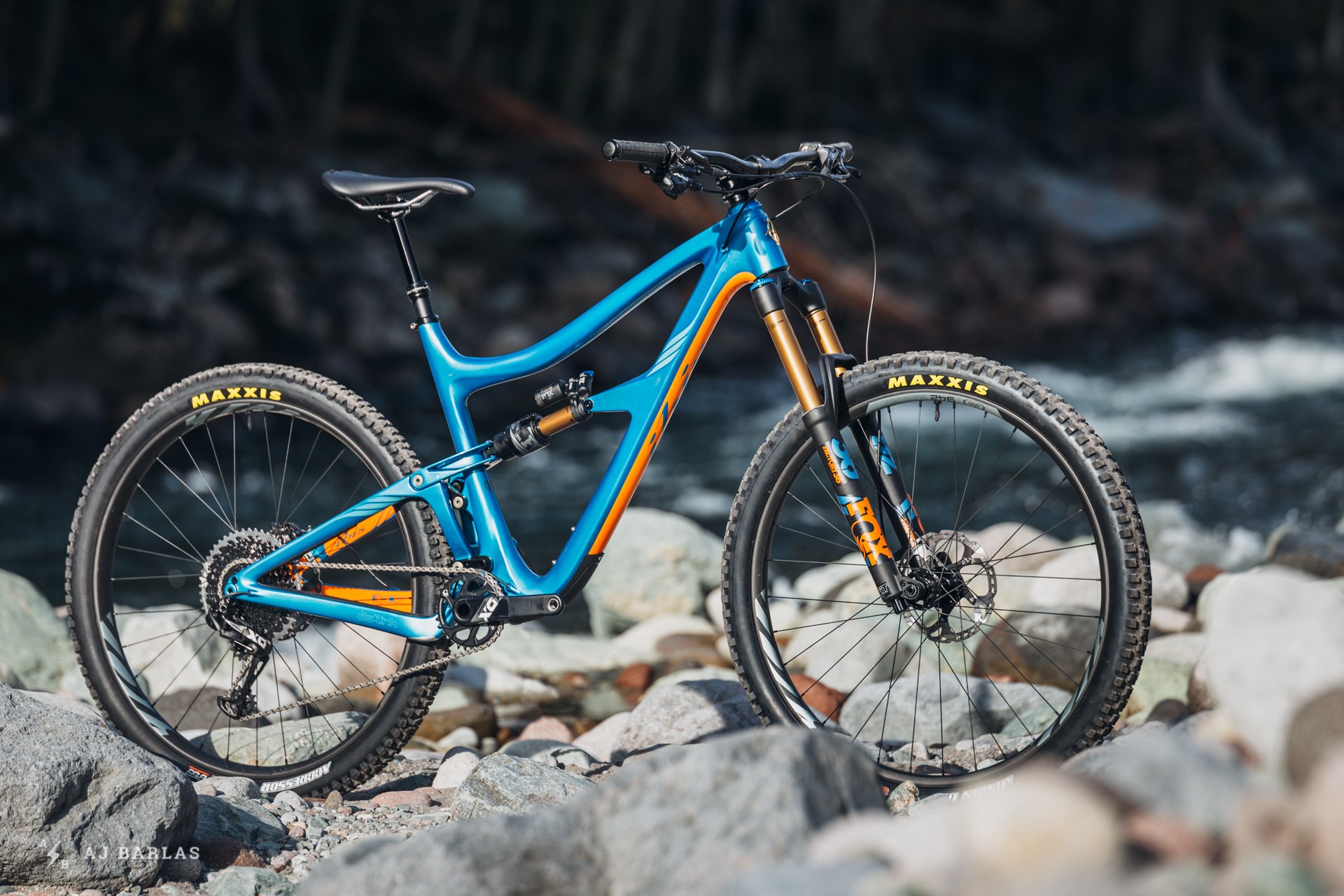
Ibis 942 Carbon Wheels
Carbon wheels that I haven’t had any experience with can make me nervous. In the past it’s been easy to find a carbon wheel that rides like a piece of wood, deflecting off trail chatter and creating an unstable, unpredictable ride. This was definitely not the case with the Ibis 942 wheels.
At 35mm wide (internal), these are the widest rims I’ve ridden with tires in the 2.35—2.6-inch range. The rim width increased my concern leading into the first ride, with wider rims often providing a stiffer base. Thankfully I needn’t have worried and I’m pleasantly surprised by how they ride. These wheels tracked the ground wonderfully, leaving little concern with holding lines. They’re compliant and very comfortable regardless of the conditions. Though not as pronounced as others, the zip out of corners and compressions that comes with carbon wheels is there. An excellent balance of comfort and performance has been achieved.
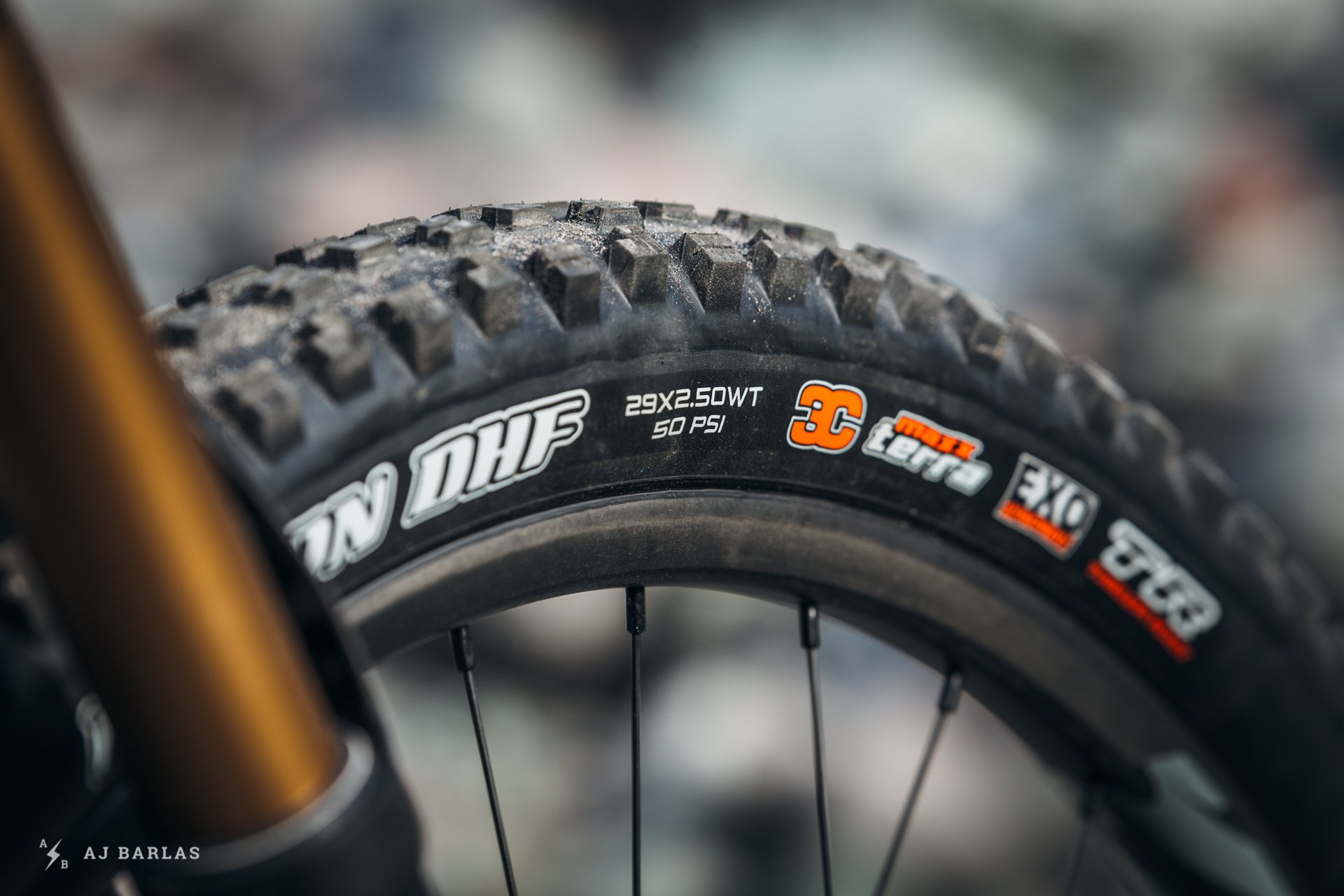
Maxxis Tires
Maxxis tires have become the obvious choice for aggressive long-travel bikes. Fitted to the front wheel of the Ripmo is a DHF 2.5 WT and the rear has an Aggressor 2.5 WT, each in an EXO casing. The new WT treads offer an excellent tire, with the larger, more spaced lugs on the DHF performing flawlessly. Minion fans will thoroughly enjoy the improved, larger tire. The Aggressor’s shape made for an excellent rear tire on the Ripmo, with braking kept clean and direct. Climbing traction with the Aggressor was good too.
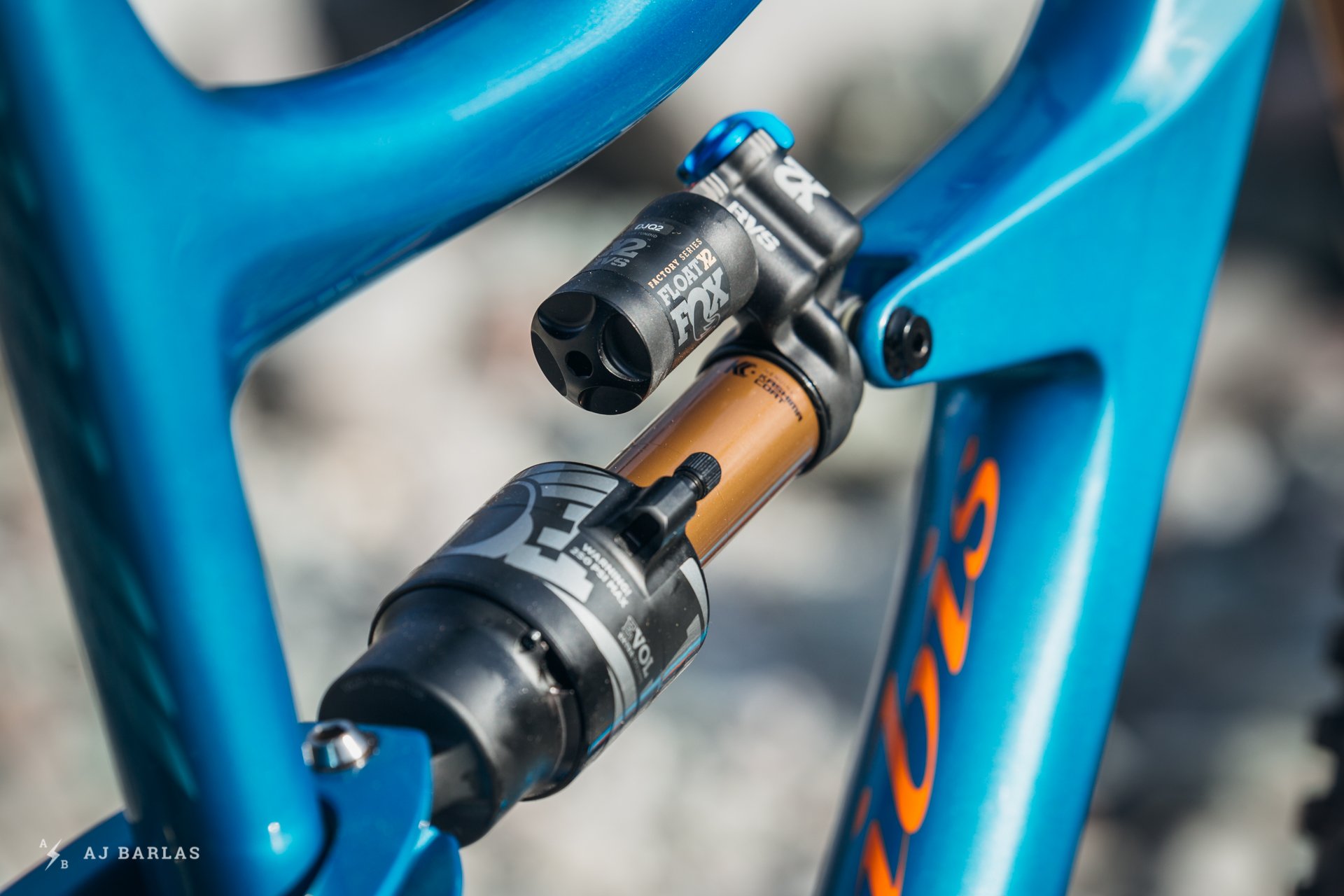
Fox Suspenders
The Ripmo’s suspension is really good. It’s great in fact and the platform is perfectly complemented by the 2018 Fox suspension. Up front, the 36 Factory RC2, ridden stock with one volume spacer, gave plenty of damper control. The Float X2 rear shock matched very well with the DW-Link suspension. More on the differences between the DPX2 and the X2 below.
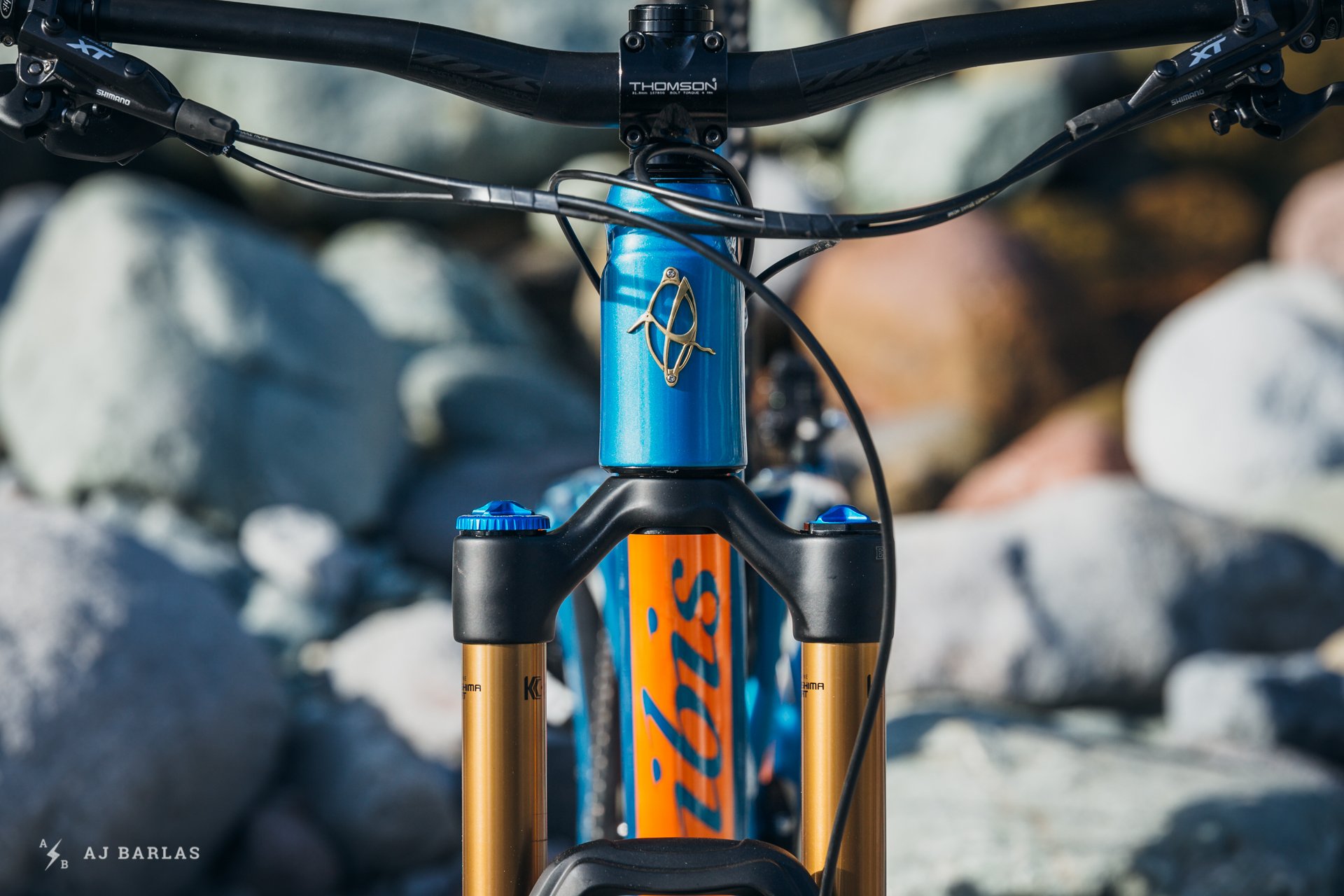
Ibis Handlebar and Saddle.
An Ibis-branded saddle and bar adorned the bike. The carbon bar measured 800mm wide and had a very comfortable 5-degree up and 9-degree backsweep — my preferred dimensions. Clamp diameter is 31.8 and it results in a very comfortable bar on the trail.
Saddles are arguably the most personal piece of equipment on a bike and for me, the Ibis seat was very uncomfortable. The shape incorporates a longer nose and was relatively narrow. It’s a nicely finished piece with a good balance of padding.*
*Ibis have informed us that all of their bikes are now fitted with WTB's Silverado Saddle.
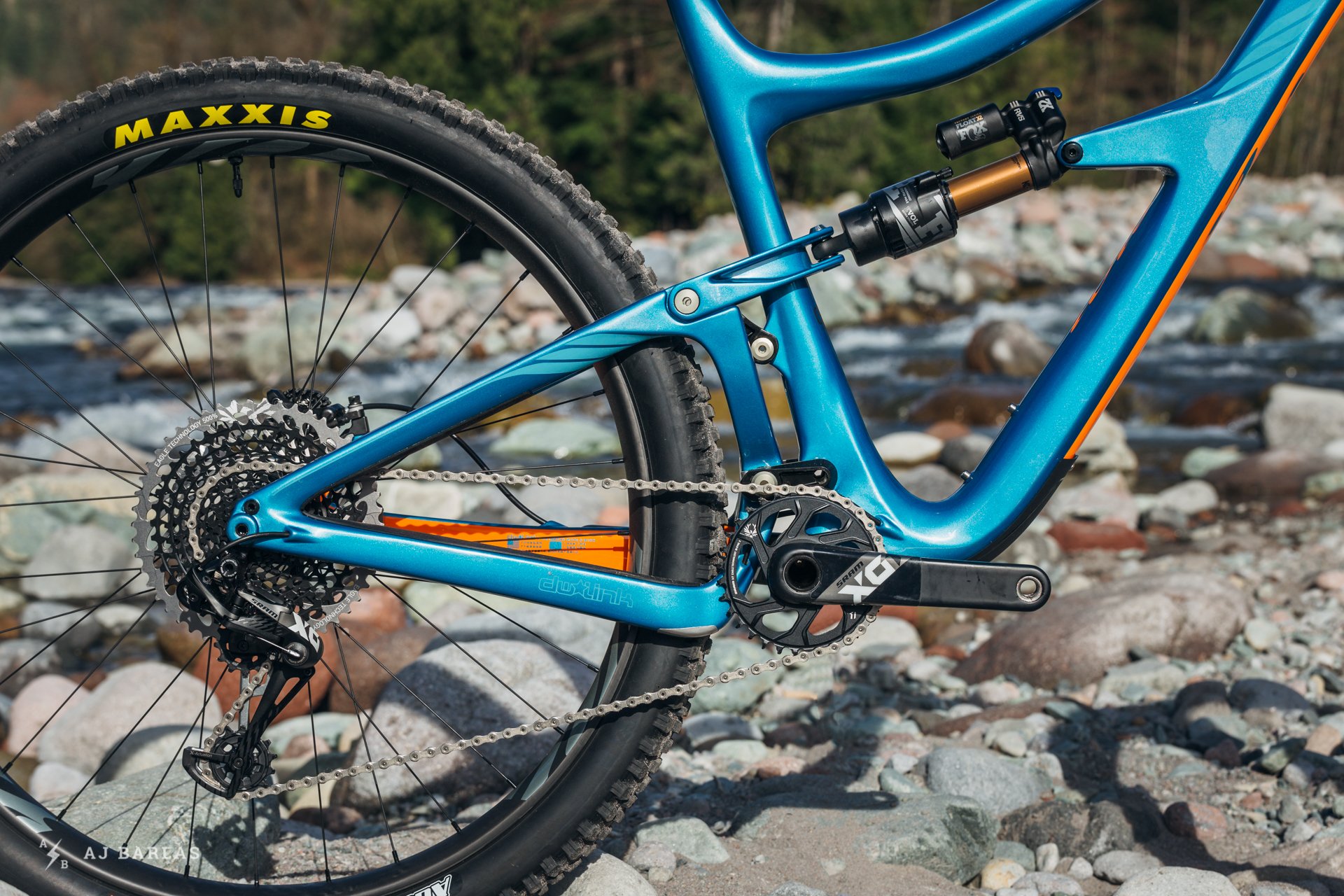
SRAM X01 Eagle
The drivetrain that broke the 2x camel’s back. SRAM’s Eagle gearing success has already been well documented and is well-deserved. There were no issues with shifts, zero dropped chains, and it remained quiet throughout testing.
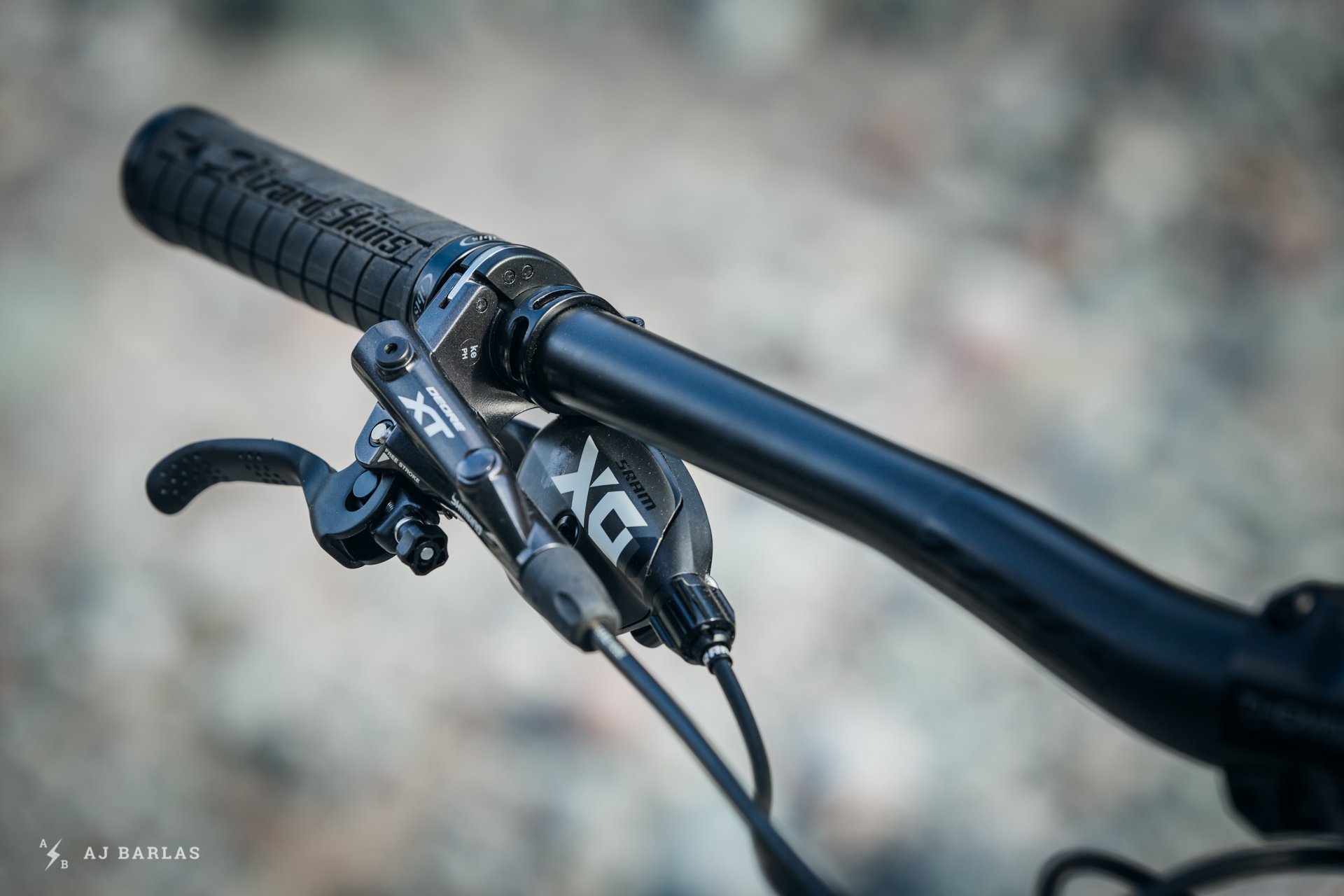
Shimano XT Brakes
Including a mix of Shimano and SRAM running gear was welcomed. The Shimano XT brakes pack a punch for a set of trail stoppers and have been more reliable than the equivalent from SRAM. They weren’t perfect, though, and I did occasionally experience the shifting bite point. With the bike being such a brawler it would be nice to see a 203mm rotor on the front wheel.
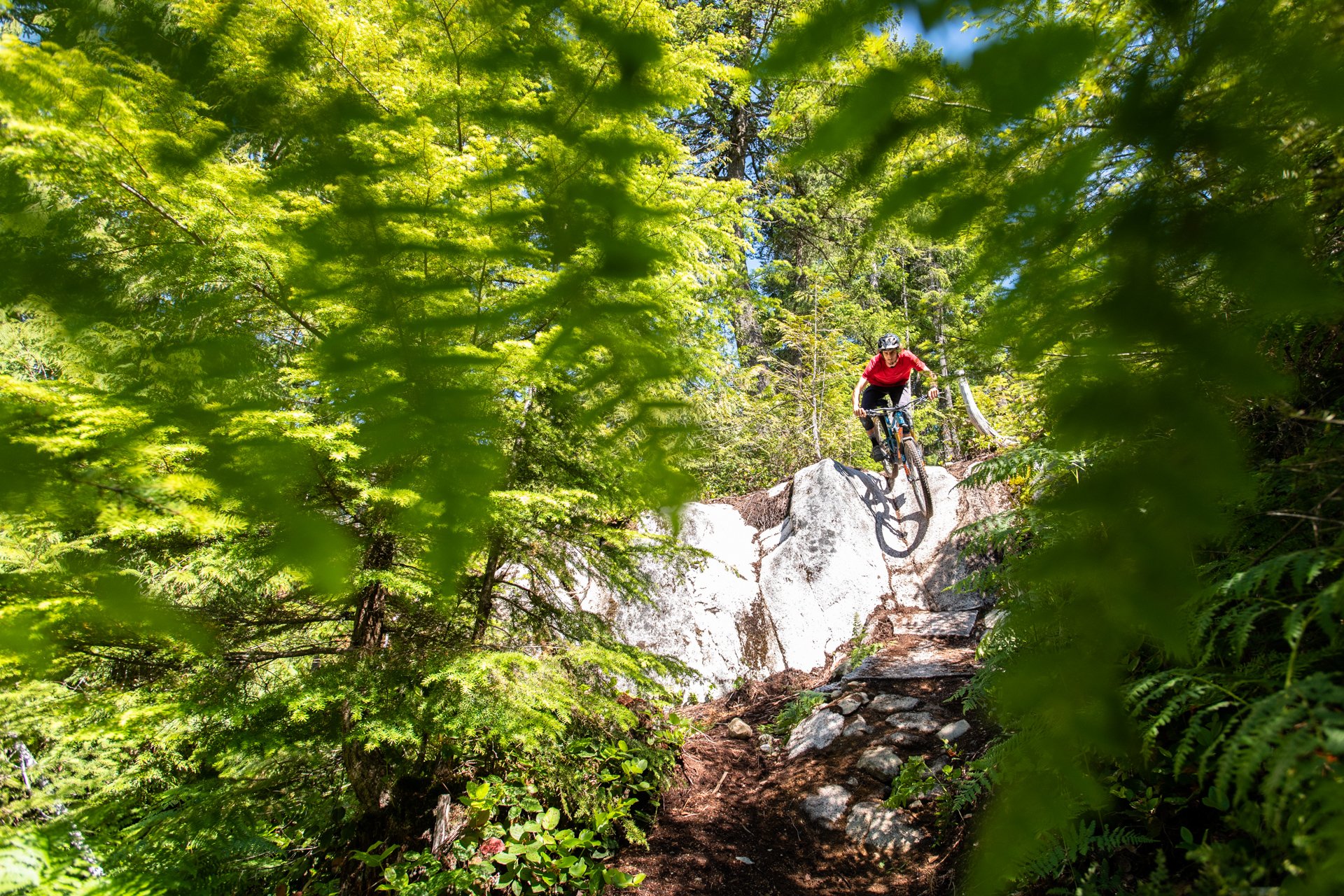
On the Trail
Initially, the rear suspension was set to 30% sag with about 20% in the front. During setup the shape felt good and I was happy with the positioning but on the trail, it was a different story. The bike sat too deep for climbing, causing the front to unweight and wander on relatively average grade ascents. It also had a negative effect on the Ripmo’s attitude when putting down the hammer — it was relatively sluggish and slow to respond. It did, however, feel great in steep, rough terrain, with the rear being very compliant and soaking up hits well.
After a few rides, the rear suspension was adjusted to Ibis’ recommended settings, which I had since discovered. It’s advised to set the Ripmo up with 25% sag in the rear. I settled on 171psi to achieve the recommended in the standing, attack position. Damper settings were adjusted accordingly. The fork was left at 20% sag and with one volume spacer.
I didn't think 25% sag would be the magic bullet. Climbing, yup, but considering how well the suspension performed in steep, bony terrain, I anticipated the bike riding too harshly with less sag. How wrong I was! As expected, the change cleaned up the Ripmo’s climbing traits and provided more character when sprinting or smashing into berms. In rough terrain, the Ripmo’s DW-Link suspension continued to eat the hits, all in a composed manner. In such situations, the bike’s shape improved and there was more life to the ride, without the potential negative effects.
The second half of the Ripmo's rear travel is more linear and it greatly improves the ability to handle the extra pressure, removing harshness at the bottom end. On the pedals, progression felt through the first half of the stroke provided an excellent and supportive ride. It didn’t exhibit any of the pronounced spiking that some older DW-Links had when pedalling through square-edged trail features, at least not with the stock 32-tooth chainring.
In the First Impression piece I mentioned the shorter fork offset and how it felt nervous on the Ripmo with the stock 50mm stem. After fitting a 31mm Renthal stem, feel was greatly improved but it made the bike too cramped for my 191cm frame. A 40mm stem struck an excellent balance, leaving me room to move while tempering the nervous attitude.
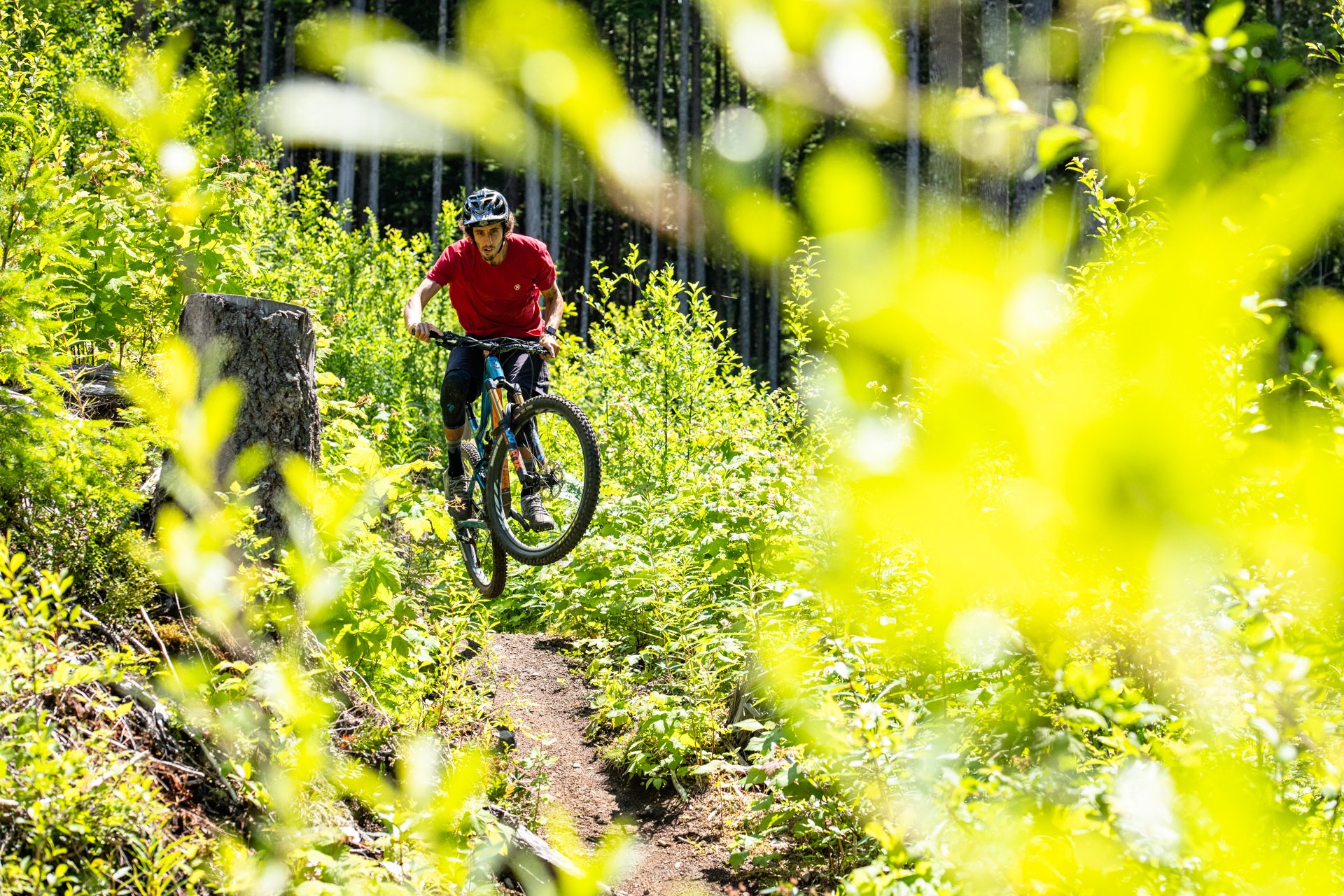
The Ripmo wants you to be dynamic and play with it.
The shorter offset calms the front wheel in a number of situations — climbing and cornering in smooth terrain being two noticeable areas. I still found it to exhibit a nervous demeanour when going for it in aggressive terrain. On flatter, bermed trails, the geometry complimented an energetic rider. It made time where it didn’t seem any existed and danced down the trail with ease. Tip it down a steep grade where comfort at speed is key, or put it through terrain with lots of root and rock, and the bike wasn’t as comfortable. Repeatedly I found it required more rider input in these situations, compared to similar bikes. As a tall rider, I found myself having to push the front of the bike further ahead when coming into rough sections, moving the front wheel further away from my mass.
We maintained the same trail measurement as the HD4 because we liked how it steered while descending. We didn't want to make the wheelbase longer because with the long reach and long 29er fork the wheelbase was already long enough. Much longer and it would turn into a sled that's only fun above 25 mph. If we had gone slacker we could have tilted the seat tube angle even further to keep the right weight balance but that also increases the wheelbase. With the current geo we felt we had struck a nice balance where the bike works well everywhere. – Ibis Cycles, Colin Hughes when asked why they used the shorter offset.
Ibis has noted a regular 51mm offset may benefit riders interested in taking the Ripmo down steeper, more aggressive terrain. Similar bikes like the 2019 Specialized Stumpjumper* and Santa Cruz’s Hightower LT come with ’regular’ 51mm fork offsets and in my experience, neither feel nervous in similarly aggressive conditions. For riders that think they’ll need a longer offset your options are a custom frame-only build or to work with your LBS to swap it or flip the fork for the larger offset.
*The regular Stumpy draws the most similarities to the Ripmo
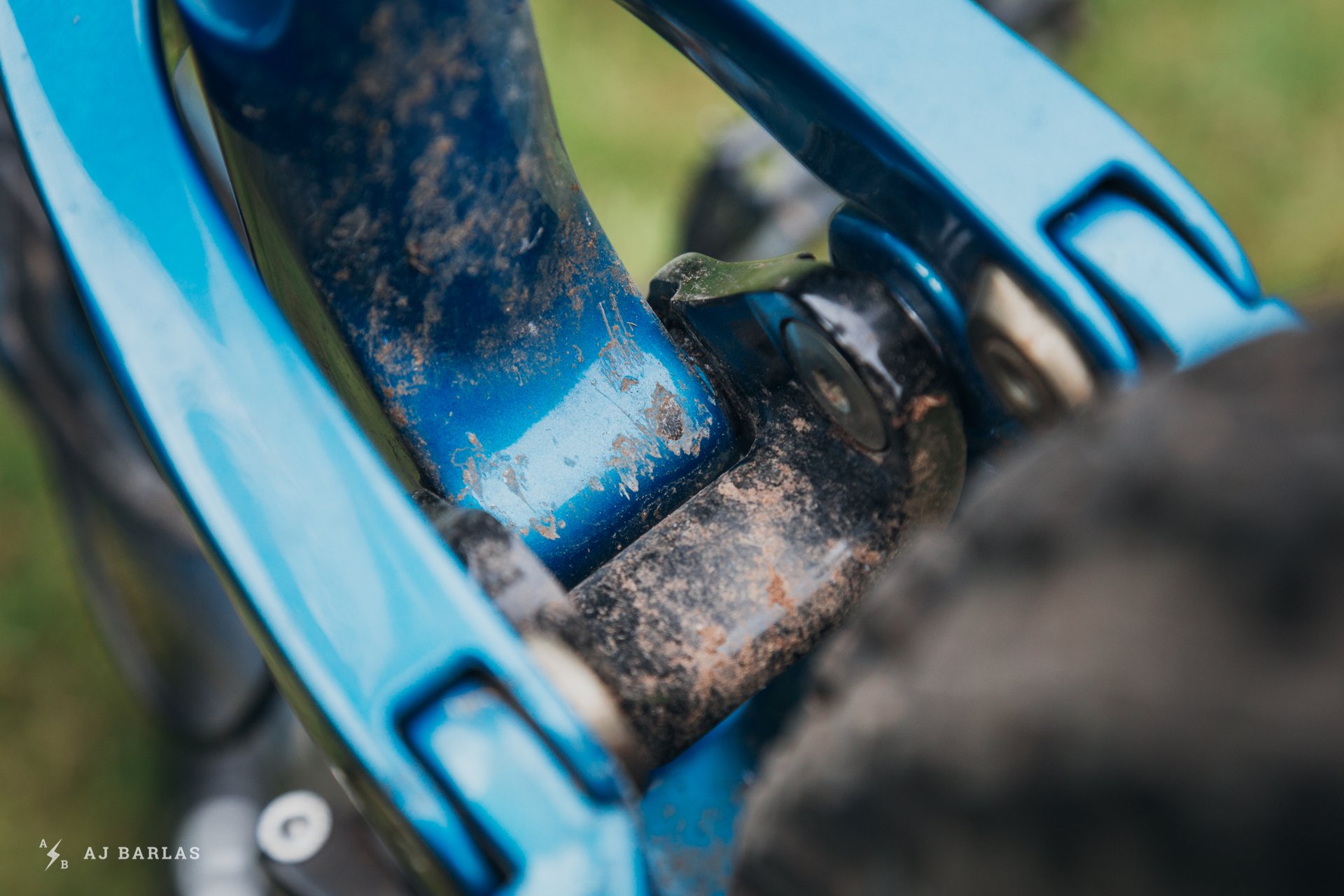
Rocks have a tendency to get caught between the links and the seat tube. All the markings toward the link (black), including the dark one – which is the carbon – are chips with dirt in them. Update: Ibis confirmed they are now shipping Ripmo's with a protective Hypalon cover from 3M for the upper link.
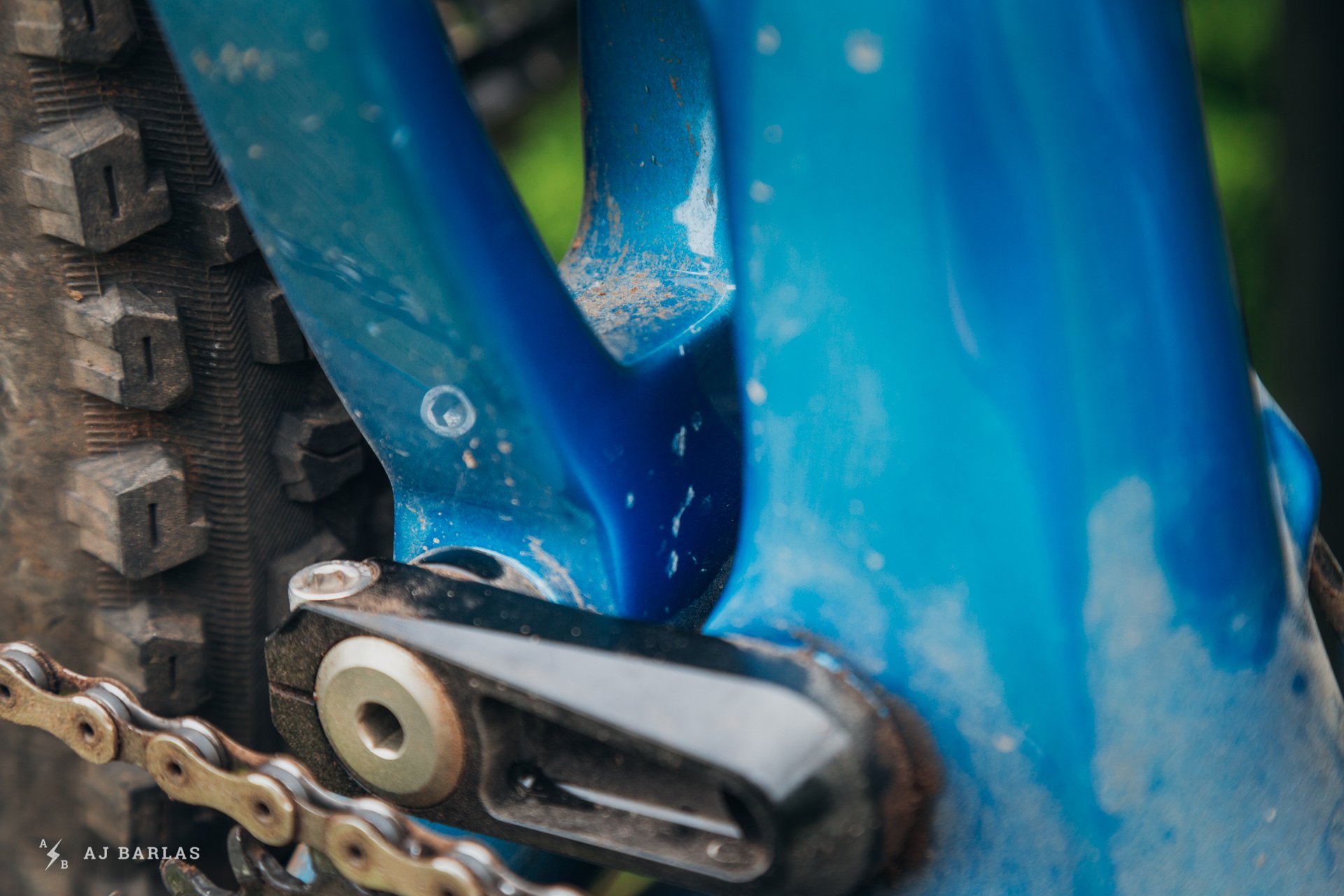
The lower link had less damage, but it's obvious that rocks were caught here too. This is the front of the rear triangle.
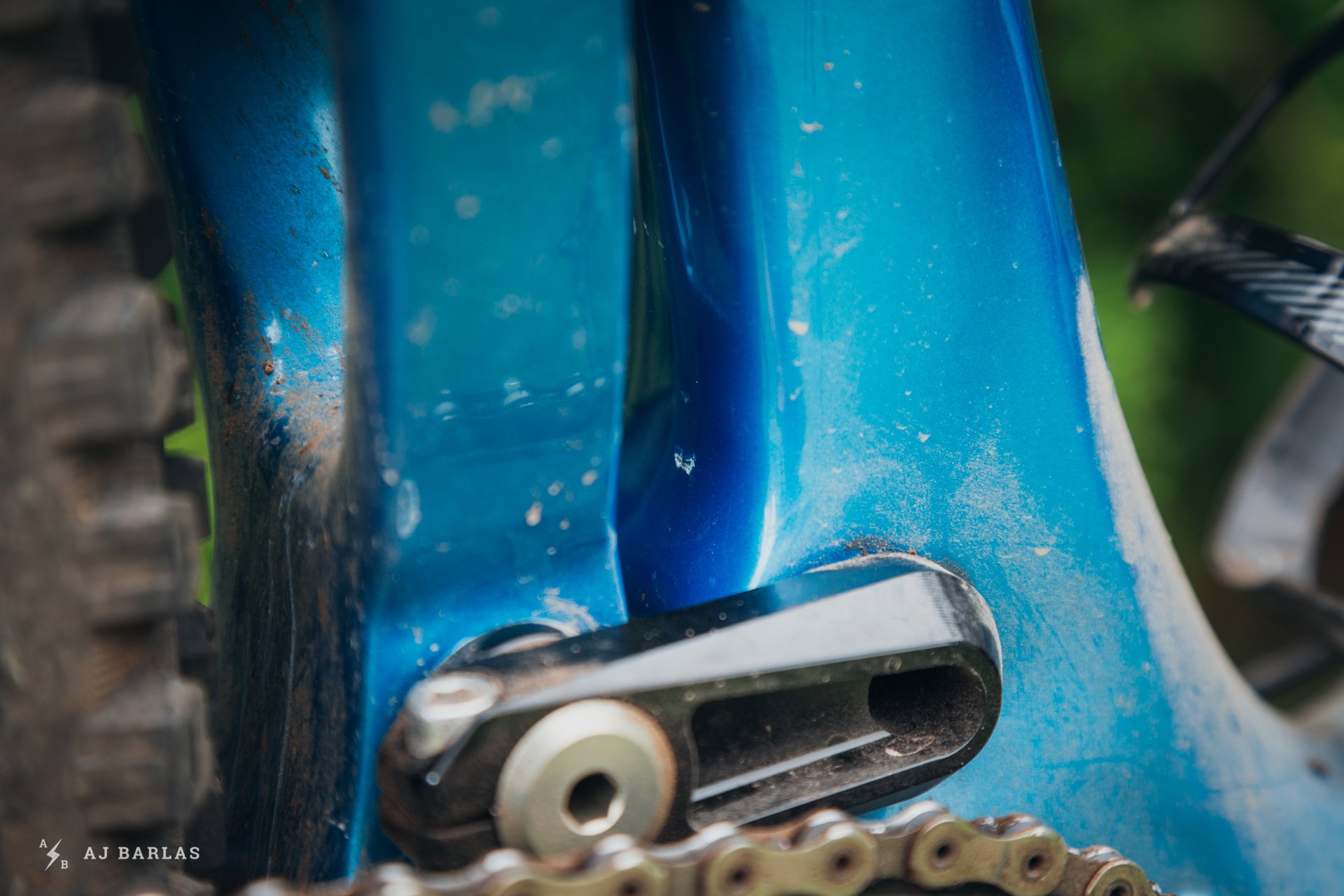
It's the only thing that could be a possible durability issue with the Ripmo. It's an otherwise incredibly built bike that shows an obvious attention to detail.
Fox’s Float X2 shock is a great damper for the Ripmo and it allows you to get the most out of the very capable an efficient suspension. It comes stock with the max volume bands installed* and aside from one section of trail with a four–five-foot drop to a mostly flat landing, it worked great. The 2019 X2 with its new bottom out bumper will improve the Ripmo's ability to handle flat landings. If you are happy with more HSC that will work too, but I wasn’t happy with the performance elsewhere to leave it set for the one hit that unsettled it.
*The 210x55 Float X2 fits a max of two volume spacers
The DPX2 performed commendably in the same heavy situations. It was only let down slightly by fewer adjustments available. I also found it to feel harsher as it heated up toward the end of longer descents. If all-out traction and long runs are your jam, then save your pennies for the higher specification suspension package. Although the DPX2 performs very well, the Float X2 really allows the Ripmo’s 145mm of rear-wheel travel to shine.
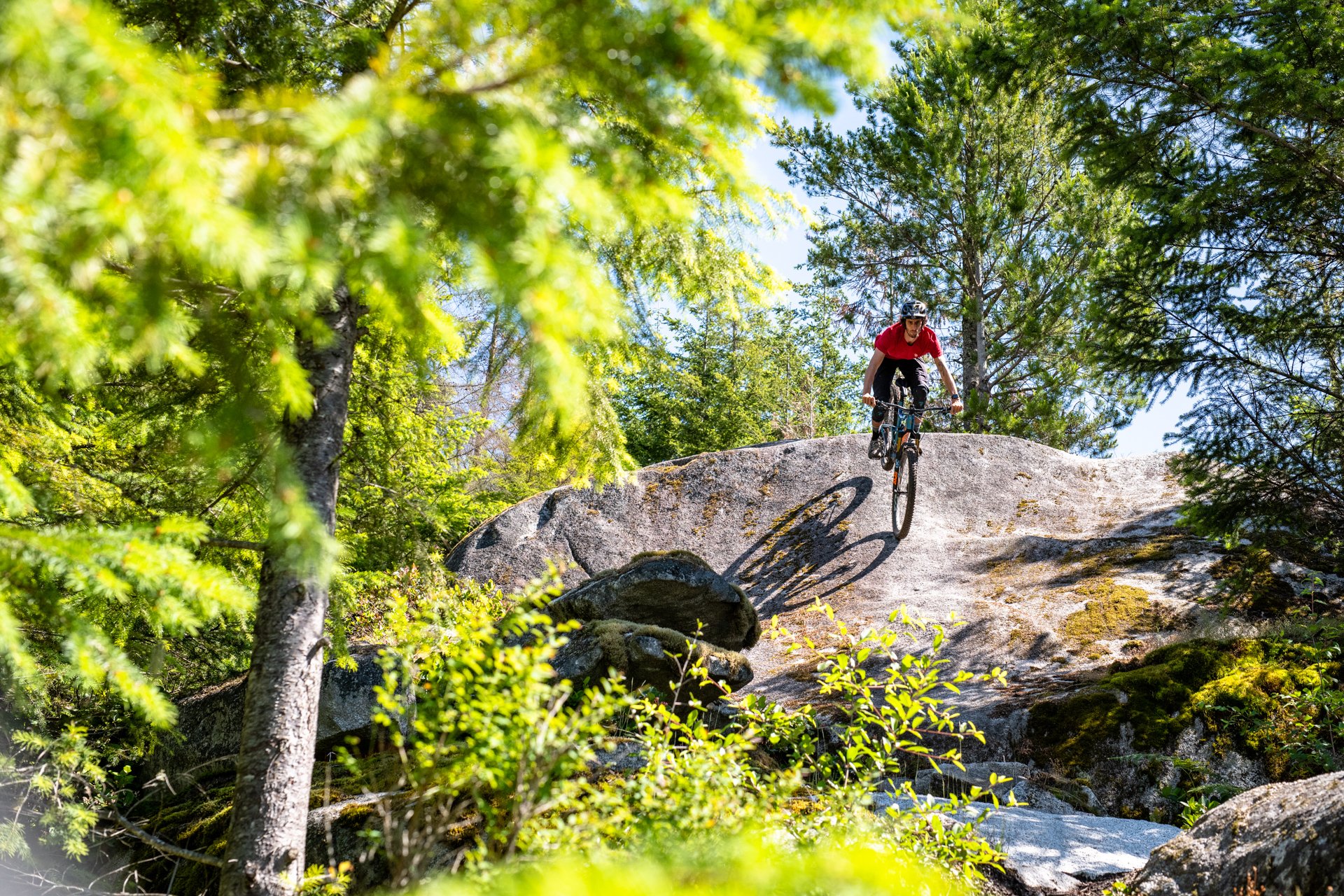
The Ripmo is an excellent platform that makes use of the latest in technology and geometry. The suspension works sensationally and it’s an easy ride to get along with in many aspects. The carbon frame rides very comfortably and is impeccably put together. It’s fun and very dynamic but if riding or racing in aggressive terrain are your focus, consider fitting a regular 51mm fork offset (there are already custom builds doing this).
The Ripmo delivers relatively good value with the X01 Eagle model retailing for 7,099 USD. Toss on the Float X2 for an additional 270 USD and you’ve got one heck of a bike. If carbon wheels are your jam, an additional 800 USD buys you a set of Ibis 942 wheels, which are a very good wheel. That’s a carbonofied build with the best dampers for less than similar models from competing manufacturers..
Head to the Ibis website to play around with the build tool and learn more about the bike.







Comments
Aaron Croft
5 years, 9 months ago
A very nice bike for sure, but $7099 is a good value these days? Jesus.
Reply
Vik Banerjee
5 years, 9 months ago
That's ~$9,350 Canada Bucks without the shock upgrade or carbon wheels!
Reply
AJ Barlas
5 years, 9 months ago
"Relatively" good value. It's a little more than some and less than a couple of other equivalent bikes in the stock guise. With the updated shock and wheels, it comes in under the competition (with some not offering a shock upgrade at all). Agreed though, it is absolutely a lot of money, no matter what way it's looked at.
Reply
Tadpoledancer
5 years, 9 months ago
Lovely review! For the riders who might benefit from a 51 m offset, would it not be easier to install an angle set to get that extra confidence in the steeps instead of going through the trouble of getting a 51 mm offset fork? I love the fact that this is possible on Ibis frames.
Reply
AJ Barlas
5 years, 9 months ago
Thanks, Tadpoledancer (nice username!). Yes, that would be an option too, off course. My bad forgetting to add that in. Without trying it, I'm hard-pressed to confirm what would work best, but it would be a cheaper, and fun option to try before amending the fork. Frame size will come into play with this too.
Reply
Tadpoledancer
5 years, 9 months ago
Haha, thanks. I've just gotten a Ripmo as my personal bike and I'm liking it a lot so far! Geometry seems pretty sorted as is, but will definitely mess about with an angle set at some point just to see what happens. I guess it will become pretty similar to the Sentinel at some point depending on how much the angle is changed,
Reply
Endur-Bro
5 years, 9 months ago
Offset bushings might be an easier option? Unless there is contact of sorts at full compression.
Reply
rndholesqpeg
5 years, 9 months ago
Glad to see someone else with the front brake lever on the side that god intended it to be on.
Reply
AJ Barlas
5 years, 9 months ago
Hahaha. I sense a debate coming…
Reply
Cam McRae
5 years, 9 months ago
Pretty sure that was Allah's responsibility. And Buddha put the cranks on the right.
Reply
bikedrd
5 years, 9 months ago
Very nice review. I'm going on a month now on one of these Ripmo. After running it a couple rides stock, I installed a Works -1.5 headset that has made the bike feel exactly like I want with no ill affects. Definitely a good move, if someone is considering it.
Reply
Tadpoledancer
5 years, 9 months ago
Cool! What are the trails like where you do your riding? I'll probably try this at some point with mine as well, but I'm positively surprised by the 66 deg angle after having been on 65 deg bikes lately.
Reply
Cambo
5 years, 4 months ago
I’ve just tried a -1.5 cane creek angleset on my large ripmo and like the handling! With the added stack height the ride height feels very similar. I can’t stand the popping and creaking from the angleset. What length works headset did you use and for what size ripmo? Seems my headtube measures smaller than the ibis geo chart suggests
Reply
Wfo922
5 years, 9 months ago
Awesome review! Thanks
Reply
Vik Banerjee
5 years, 9 months ago
I hope Shimano fixes this problem soon. I went SRAM Codes on the new bike instead of the XTs I would normally spec. The SRAM brakes have been flawless.
Reply
mike
5 years, 9 months ago
I have seen rocks get caught in the frame of the Trance causing a failure. Wonder if they would warranty their frame if a rock caused damage getting crushed in there?.
Reply
AJ Barlas
5 years, 9 months ago
Do you know if Giant were providing warranty for those failures? I'll reach out to Ibis and see what they say.
Reply
AJ Barlas
5 years, 9 months ago
From Ibis: "We actually started to ship a protective cover made from Hypalon for the upper link.
We're working on something for the bottom. But if you do crush a rock in there and crack a frame, we got your back for the next seven years. Same with wheels. Even alloy. If it's our fault, we'll fix it."
Reply
mike
5 years, 9 months ago
not 100% on that , I do know he did get a new lower stay , not sure if he had to pay. Giant did handle it thru the store in Langley.
Reply
Andrew Major
5 years, 9 months ago
Great read AJ!
Did you have to do any maintenance to the lower link or notice any difference in friction over the review?
After Rocky pushed that rope so long to then switch back to bearings it’s a surprising move on Ibis’ part to spec bushings.
Reply
AJ Barlas
5 years, 9 months ago
Hey Andrew. No change, if anything within the range of travel it felt better at the end but could be placebo. The link that the bushings are in (lower) hardly rotates at all, so it makes sense. Other manu's that use it tend to have more rotation and while I believe it's still not enough to warrant the use of bearings in the strictest of engineering terms, from memory they see a lot more than on this. The rear worked perfectly, was stout and needed zero maintenance.
Reply
Paul Burbidge
5 years, 9 months ago
good to hear, I'd heard rumors that longish lead times were due to a problem there. Maybe it's just demand. This thing is on my shortlist to replace my OG Ripley. Now that I have a Chromag Primer the geometry change between my current bikes is too much to get used to. Ripmo looks like a better compliment-hopefully it pedals almost as well as the OG.
Reply
Shoreboy
5 years, 9 months ago
Bushings done properly are an excellent application for low movement suspension pivots. Ive had bikes with bushings that haven't needed replacement over the entire life of the frame. The same cannot usually be said of bearings.
Reply
Andrew Major
5 years, 9 months ago
Absolutely agree. My Marin Rift Zone uses bushings at the (very low rotation) seatstay pivot and they rotate as new where a bearing in that application would have undoubtedly had issues with pitting.
I was just curious as this link is going to be taking a lot more side loading and it wasn’t mentioned (good or bad)
Thanks for the reply AJ!
Reply
tierry lermite
5 years, 9 months ago
Awesome review thx you.
So it’s possible to setup the rear brake on the left then ? I read somewhere than because of the cable routing it was impossible to reverse the brake .
Now we need a comparison vs the firebird :)
Reply
Shoreboy
5 years, 9 months ago
Why would it be impossible on any bike? Instead of the rear brake going around the head tube, it just stays on the same side as the brake left hand (in this case rear) brake. The picture shows it quite well.
Reply
luckyguy19
5 years, 9 months ago
Slash or Ripmo for a great quiver killing all around bike in the western mountains? We usually pedal for our down hills but occasionally hit the bike park. With the aluminum Trek Slash launched it makes that bike much more affordable.
Reply
Nouseforaname
5 years, 9 months ago
As a Slash owner i'd still pick the Slash given what i perceive as the dated-ness of the Ripmos geo - short tt (steep st angle and not super long reach) and 66deg HA - I've not ridden a Ripmo - but AJs review seemed to hit what i expected - good all rounder but gets more nervous in the chunk at speed. When big brands are speccing their bikes in the 65 deg HA range (and lower - Specialized) this bike seems old before it's time.
Though my preference would be to leave both of them on the table and pick up Ajs personal ride (G16). So that probably tells you my leanings for what that's worth. I think companies need to stop worrying about wheelbase.
Reply
Tadpoledancer
5 years, 9 months ago
If you compare the Ripmo and the Slash I'd say that the Ripmo has a more "modern" geometry. The headangle is decent for an all around bike, reach is longer and ST angle is steeper. I havent tried the Slash much, but my guess would be that the Ripmo is the better quiverkiller bike of the two, with better pedaling characteristics.
A plus with the Ripmo is that the headangle can be modified with anglesets if you want to experiment with geo. Also the seat tube lengths are really nice and short, so you can run long travel droppers and/or upsize to a larger frame should you want that. I'd say you get a pretty progressive bike if you take a XL Ripmo (493 mm reach, 76 degrees ST angle, 470 mm ST length) and slacken it out to whatever headtubeangle you would like (I guess around -2 degrees is about as much as it can be modified).
Reply
Nouseforaname
5 years, 9 months ago
I guess my take on all that is that if you have to fiddle around that much - how 'modern' of a bike is it really?
Steeper seat angle needs more reach - and I wouldn't call the Slash long by any means - but with a 74 deg SA it has a bigger 'seat to bar measurement' than just it's reach would suggest.
But really - the Slash is a bike that's been around since 2017 (coming into it's third season now that the 2019 will ship at the end of this month). So maybe it is outdated.
Reply
AJ Barlas
5 years, 9 months ago
_"I think companies need to stop worrying about wheelbase." _
Could not agree more. :)
Reply
Endur-Bro
5 years, 9 months ago
The Ripmo appears to be a bike that should be running a 51mm offset.
Reply
DangerousDave
5 years, 9 months ago
Can you clarify your comment about stem length? I'm confused about how a shorter stem would make the steering feel more stable. Thanks!
Reply
AJ Barlas
5 years, 9 months ago
In this instance, the shorter stem comment is with regards to the shorter offset. It's been noted that running a stem length the same, or shorter than the offset, cleans up the handling. This is something that was discussed in the First Impressions article and that I tested immediately after. In my experience, it proved to be true; a stem that is the same, or shorter than the offset provides more positive feeling at the bar with these shorter offsets.
Reply
boomforeal
5 years, 9 months ago
comment-section cherry on top of an already stellar review. compelling writing and voice coupled with thoughtful insights and a keen eye for detail. i really enjoyed this
Reply
Jitensha Kun
5 years, 9 months ago
It seems like the Ripmo doesn't fit particularly big. Is that a fair assessment? I.e. if an XL HD4 fits small the XL Ripmo won't be much better?
Reply
Please log in to leave a comment.